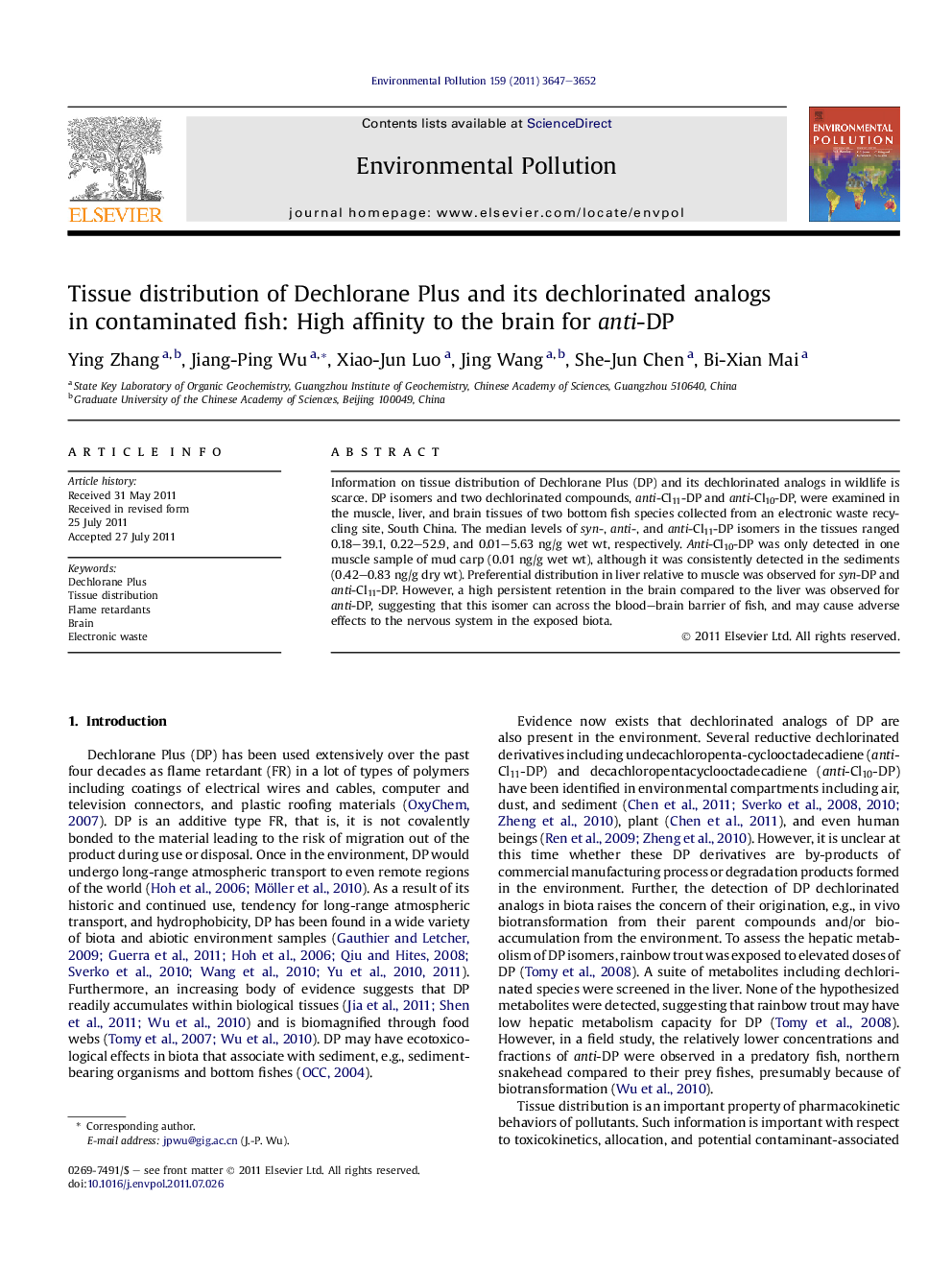| Article ID | Journal | Published Year | Pages | File Type |
|---|---|---|---|---|
| 4425269 | Environmental Pollution | 2011 | 6 Pages |
Information on tissue distribution of Dechlorane Plus (DP) and its dechlorinated analogs in wildlife is scarce. DP isomers and two dechlorinated compounds, anti-Cl11-DP and anti-Cl10-DP, were examined in the muscle, liver, and brain tissues of two bottom fish species collected from an electronic waste recycling site, South China. The median levels of syn-, anti-, and anti-Cl11-DP isomers in the tissues ranged 0.18–39.1, 0.22–52.9, and 0.01–5.63 ng/g wet wt, respectively. Anti-Cl10-DP was only detected in one muscle sample of mud carp (0.01 ng/g wet wt), although it was consistently detected in the sediments (0.42–0.83 ng/g dry wt). Preferential distribution in liver relative to muscle was observed for syn-DP and anti-Cl11-DP. However, a high persistent retention in the brain compared to the liver was observed for anti-DP, suggesting that this isomer can across the blood–brain barrier of fish, and may cause adverse effects to the nervous system in the exposed biota.
► Syn-, anti-, anti-Cl11-, and anti-Cl10-DP isomers were detected in fish tissues. ► Preferential distribution in liver was observed for syn-DP and anti-Cl11-DP. ► The anti-DP has higher affinity to the brain compared with the liver. ► The DP isomeric compositions were different among tissues.
